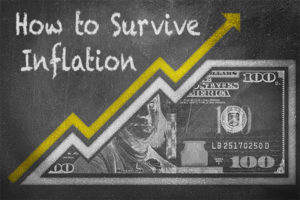New Income-Based Student Loan Repayment Plan Launches Dec. 21
The new year looks even brighter for more than 1 million people deep in student loan debt.
The new Pay as You Earn program, created in an effort to help people facing repayment hardship and possibly reduce the college loan default rate, will allow eligible student-loan borrowers to cap their monthly loan payments at 10 percent of discretionary income. This amount will be calculated using adjusted gross income minus poverty guidelines for family size. Under the new terms, the remaining student loan will be forgiven after 20 years of on-time payments.
According to Federal Student Aid, an office of the U.S. Department of Education, the new income-based student loan repayment program will begin Dec. 21.
Congress initially planned for a similar program to go into effect in 2014 with capped payments at 15 percent and possible loan forgiveness at 25 years. In light of current economic challenges, however, the Obama administration pushed to lighten the provisions and launch the program one year earlier.
Program Will Help Borrowers Move Forward
With current outstanding student loan debt mounting at a rate of more than $2,800 per second, with forecasts to exceed $1 trillion by the end of this year, the U.S. government opted to provide an opportunity for Americans deep in student loan debt to move forward financially. At least $864 billion of current student loans are secured by the federal government.
The new program also offers incentives for those borrowers who select a public service career. People who commit to such jobs and keep up with monthly payments will have their student loan debt dismissed after just 10 years.
Why the Program is Needed
For the college Class of 2013, the average borrower carried more than $35,200 in student loan debt, according to figures from a study by Fidelity Investments. The continual increase in college costs and cost-of-living expenses combined with the shortage of jobs for new graduates, has greatly affected the rate of repayment, often resulting in default.
According to the U.S. Education Department, the default rate for the first three years borrowers made payments was 13.4 percent.
More than 1 Million Eligible
To be eligible for the Pay as You Earn program, borrowers must have begun taking federal loans after Oct. 1, 2007, and received at least one disbursement after October 2011. Only certain direct federal loans qualify for the program.
The Pay as you Earn program makes the following Direct Loans eligible for new repayment terms: Direct Subsidized Loans, Direct Unsubsidized Loans, Direct PLUS Loans made to graduate or professional students and Direct Consolidation Loans without underlying PLUS loans made to parents.
Not all loans are eligible for repayment under this new program, such as Direct PLUS Loans made to parents, Direct Consolidation Loans that repaid PLUS loans (Direct or Federal Family Education Loans) made to parents, FFEL Program loans and private education loans.
The borrower must also meet certain hardship qualifications based on their income and current payment obligation. People can qualify if their regular 10-year federal student loan payment program is higher than the Pay as You Earn program amount. As part of the program, maximum monthly payments will be adjusted each year and will depend upon income and family size.
A tool has been developed to allow borrowers to have tax data transmitted directly from the Internal Revenue Service (IRS) into their Income-Based Repayment application to ease paperwork.
Pay as You Earn Advantages
In addition to paying less than one would under the standard repayment plan, the new program will help those financially trapped by interest. If the new program payment does not cover the interest that accumulates on the loan each month, the government will pay the accrued interest on Direct Subsidized Loans and the subsidized part of the Direct Consolidation Loan for up to three consecutive years of loan repayments. Interest that accrues (that is not covered by loan payments) will also not be capitalized.
Critics Measure the Downside
While an estimated 1.6 million people could benefit from the new form of repayment, critics warn that some borrowers may actually end up paying more over the life of the loan, as term lengths are extended. Since this type of agreement is adjusted according to income, documentation will also have to be submitted every year. If these records are not received, the payment will no longer be based on income and unpaid interest will also capitalize.
Another possible downside for some is that the remainder of the loan that is forgiven after 20 years may be taxed.
It is also a concern among some economists that the prospect of being able to easily discharge student loan debt will encourage students to borrow more than they should, believing the government will eventually free them from obligation.
Sources:
- Federal Student Aid. Pay As You Earn Plan. Retrieved December 10, 2012, from http://www.studentaid.ed.gov/repay-loans/understand/plans/pay-as-you-earn
- Pope, J. (2012, December 7). Feds: New student loan repayment options set. MPR News. Retrieved from http://minnesota.publicradio.org/display/web/2012/12/06/education/feds-new-student-loan-repayment-options-set/
- Rampell, C. (2012, July 20). Report Details Woes of Student Loan Debt. The New York Times. Retrieved from http://www.nytimes.com/2012/07/20/business/government-report-details-student-loan-debt.html
- Hechinger, J & Lorin, J. (2012, September 28). Student-Loan Default Rates Rise as Federal Scrutiny Grows. Bloomberg News. Retrieved from http://www.bloomberg.com/news/2012-09-28/student-loan-defaults-soar-as-government-scrutiny-grow.html
- The Project on Student Debt. Student Debt and the Class of 2011. Retrieved December 10, 2012, from http://projectonstudentdebt.org/


















